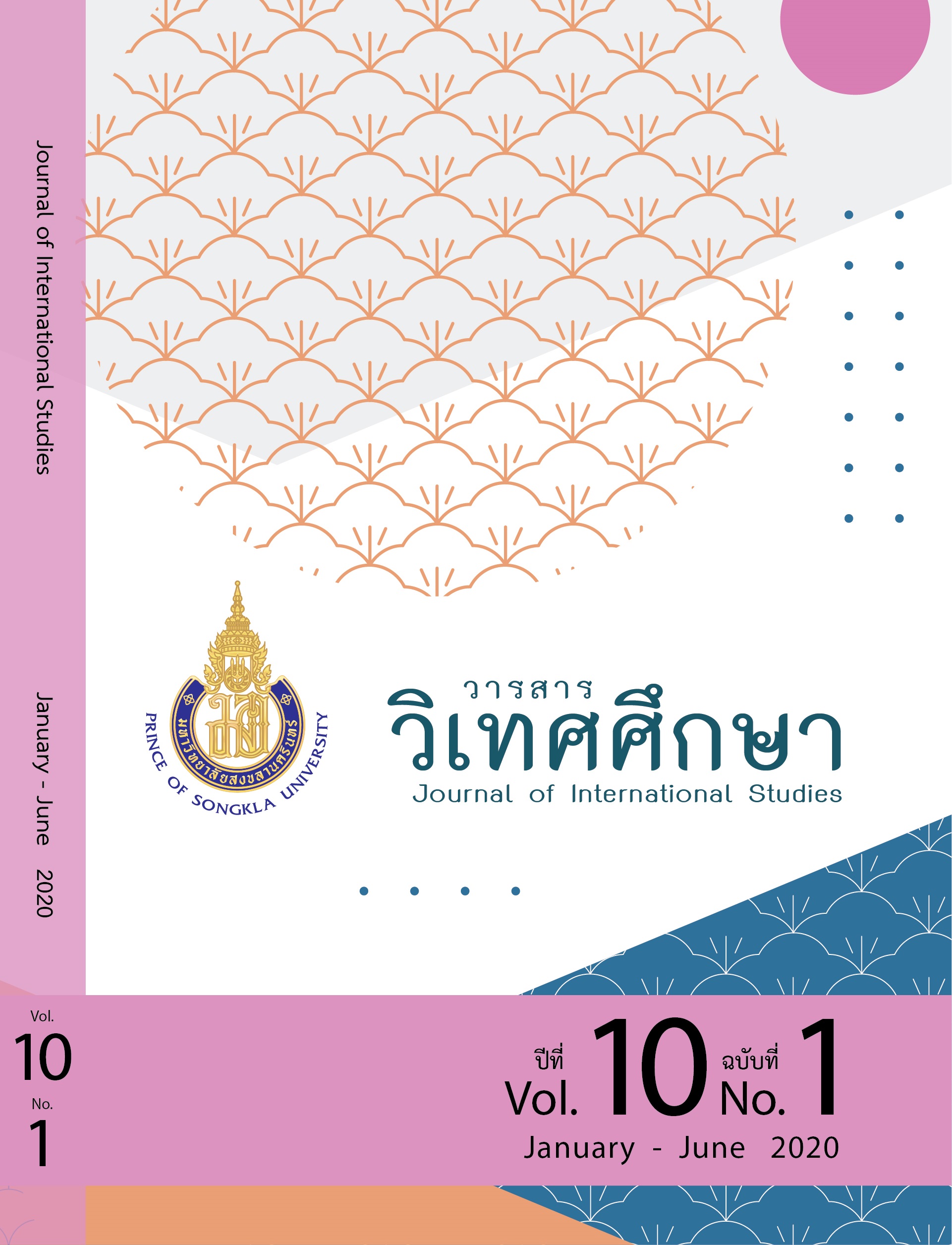Economic Structure and the Economic Linkages of Tourism Sector in Suratthani Province
Main Article Content
Abstract
This study aims to investigate the economic structure and the linkages between economic sectors related to tourism in Suratthani province. The results indicate that tourism sector plays an increasingly important role in Suratthani economy as the issue of the number of tourists and tourism revenue. In 2015, the incomes of hotel and restaurant sectors is second-largest in the gross provincial product (GPP). To compare the potential of sectors in Suratthani economy with the national data, the results present that sawmill & wood product sectors, hotel and accommodation sector and restaurant sector are first, second and third greater than others. Moreover, the linkages between sectors by identifying the parameters in the input-output (IO) table for Suratthani economy show that service sector and transportation & communication sectors are strong linkages with other sectors. Hence, the government should concentrate on tourism by investing in service sector and transportation & communication sectors for Suratthani’s economic development
Article Details
Statements and opinions expressed in articles herein are those of the authors and do not necessarily reflect the position of the editors or publisher.
Article, information, text, image, etc. which are published in Journal of International Studies, belong to Journal of International Studies. If anybody or any organization would like to use part or whole of them, they must receive written permission from Journal of International Studies before usage.
References
กองเงิน สุทธิพิทักษ์. (2550). การวิเคราะห์ความเชื่อมโยงทางเศรษฐกิจของอุตสาหกรรมการท่องเที่ยวไทย. กรุงเทพฯ: วิทยานิพนธ์เศรษฐศาสตรมหาบัณฑิต, มหาวิทยาลัยธุรกิจบัณฑิตย์.
ภัทร์ธมนต์ คงแจ่ม, และธนาวุธ แสงกาศนีย์. (2017) ผลจากการใช้จ่ายของนักท่องเที่ยวที่พักบูติกโฮเต็ลต่อสภาพแวดล้อมทางเศรษฐกิจของชุมชน: กรณีศึกษาบูติกโฮเต็ลในจังหวัดสงขลา, WMS Journal of Management, 6(2), 29-40.
สำนักงานปลัดกระทรวงการท่องเที่ยวและกีฬา. (2561). โครงการจัดทำบัญชีประชาชาติด้านการท่องเที่ยว. กรุงเทพฯ: กองเศรษฐกิจการท่องเที่ยวและกีฬา สำนักงานปลัดกระทรวงการท่องเที่ยวและกีฬา.
Khanal, B. R., Gan, C., & Becken, S. (2014). Tourism inter-industry linkages in the Lao PDR economy: an input–output analysis, Tourism Economics, 20(1), 171-194.
Kim, H., & Byung-Gook Kim, B. G. (2015). Economic impacts of the hotel industry: an input-output analysis, Tourism Review, 70(2), 132-149.
Leontief, W. (1966). Input-Output Economics, New York: Oxford University Press.
Mazumder, M. N. F., Ahmed, E. M., & Al-Amin, A. Q. (2009). Does tourism contribute significantly to the Malaysian economy? multiplier analysis using I-O technique. International Journal of Business and Management, 4(7), 146-159.
Nguyen, V. T., & Shimizu, T. (2017). Input – Output table for transportation and tourism analysis: construction and application. Journal of the Eastern Asia Society for Transportation Studies, 12, 2117-2132.
Schaffer, W., & K. Chu. (1969). Non-survey techniques for constructing regional interindustry models, Papers and Proceedings of the Regional Science Association, 23, 83-101.
Tsukui, M., & Kagatsume, M. (2017). Repercussion effects of consumption by Chinese, Taiwanese, and Korean tourists in Kyoto: using a regional waste input–output approach, Journal of Economic Structures, 6, 38.
Vora-Sittha, P. (2016). Economic impact of tourism accommodation: Thailand, Asian Social Science, 12(7), 222-230.


